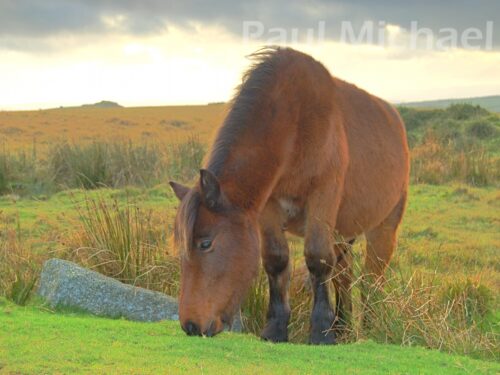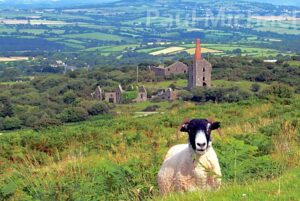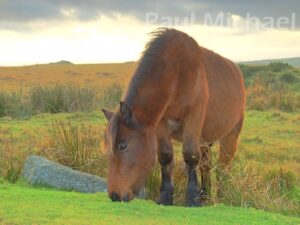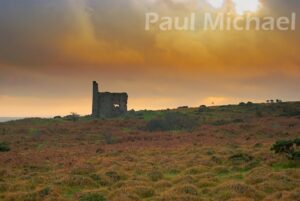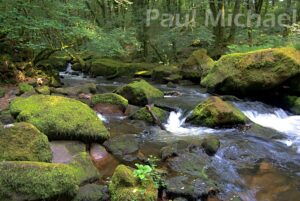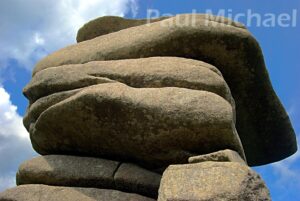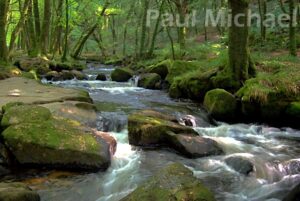At the heart of Cornwall is the beautiful and mystical wilderness of Bodmin Moor. From Minions to its East to St Brewards to its West, and from Bowithick to its North and St Neots to its South, this 80 square miles or so of granite moorland is a Cornish location of wonderment.
There are many legends and novels based in and around the Moor. The most recent, of course, is the television drama, Poldark, a Du Maurier classic. In recent times there has been much fascination with the Beast of Bodmin Moor – allegedly a large black cat that wanders the Moor. Perhaps a legend that the Cornish would rather be linked is to the legend of King Arthur. It is said that the Lady of the Lake who presented the sword, Excalibur, to King Arthur did so at Dozmary Pool, a small lake to the West of the Moor.
For me, the Moor has been a real inspiration for my photography and my walks. I live in St Germans and can just as easily travel to Dartmoor, which is significantly larger. However, from a photography point of view, Bodmin Moor packs in more per square mile than Dartmoor. This is to say that a walk of 10 miles will promote many more photos than I would care to take on Dartmoor. It’s full of interesting remains and animals.
Mining History
Recent history and the industrial revolution in the latter 1800s saw a boom in the Cornish mining industry. The Moors are littered with the remains of engine houses. These are the buildings that housed steam-driven engines used to pump water from the mines to keep them from flooding. They are so iconic and, with the backdrop of the surrounding moorland and often dramatic skies, it isn’t too difficult to snap a fantastic image of a nostalgic past.
It’s difficult to imagine what it would have been like living and working in the mines back in the day. Yet hundreds of people did just that. Today, in contrast, you might see one or two people while out and about on the Moor. Maybe nobody in the winter months!
Moorland Animals
The Moor is home to various livestock. Plenty of sheep and cattle, along with ponies. There are many interesting breeds of each, again, giving rise to many photographic opportunities. Animals behave in strange and unpredictable ways, so be ready for the unexpected. They will often pop out of nowhere or strike a pose of very cute proportions.
Visiting and Walking Bodmin Moor
My family has a few favourite go-to places for a great day out, from a flooded disused quarry near Minions, to evening sunsets at the Hurlers (3 ancient stone circles), to wild river walks and hill climbs. There’s something magical about being on the Moor, an inner feeling of tranquillity and a mindful feeling of wonderment.
The weather can change in an instant. Bear in mind that the Moor is the source of many Cornish rivers, so rain is more likely than in other parts of Cornwall. The trick here is to come prepared with some wet weather gear should it be needed. Why bother? Well, it’s the skies yielding amazing light changes over the landscape that make it all worthwhile.
Although much smaller than Dartmoor, one should come prepared with appropriate walking gear with warm and weather-proof layers, plenty of water and food, maps and a compass. I always walk with a GPS-based app or two on my smartphone. I’m more interested in quickly knowing what direction I need to take so I can spend my time taking photos rather than being a traditionalist with a map and compass. However, if my phone fails, I know how to use the map and compass that I always carry. Dib, dib, be prepared!
If you want to get into walking, read my article, A Beginner’s Guide to Hiking and Walks
.If you are holidaying in Cornwall, the Moor is an absolute must-see. Arrange to spend a day here, perhaps taking some lunch at the Jamaica Inn or one of the many fantastically aged hostelries dotted all over. You won’t be disappointed. Here is but one of many articles from a quick search – Cornwall Guide to the Moor.

